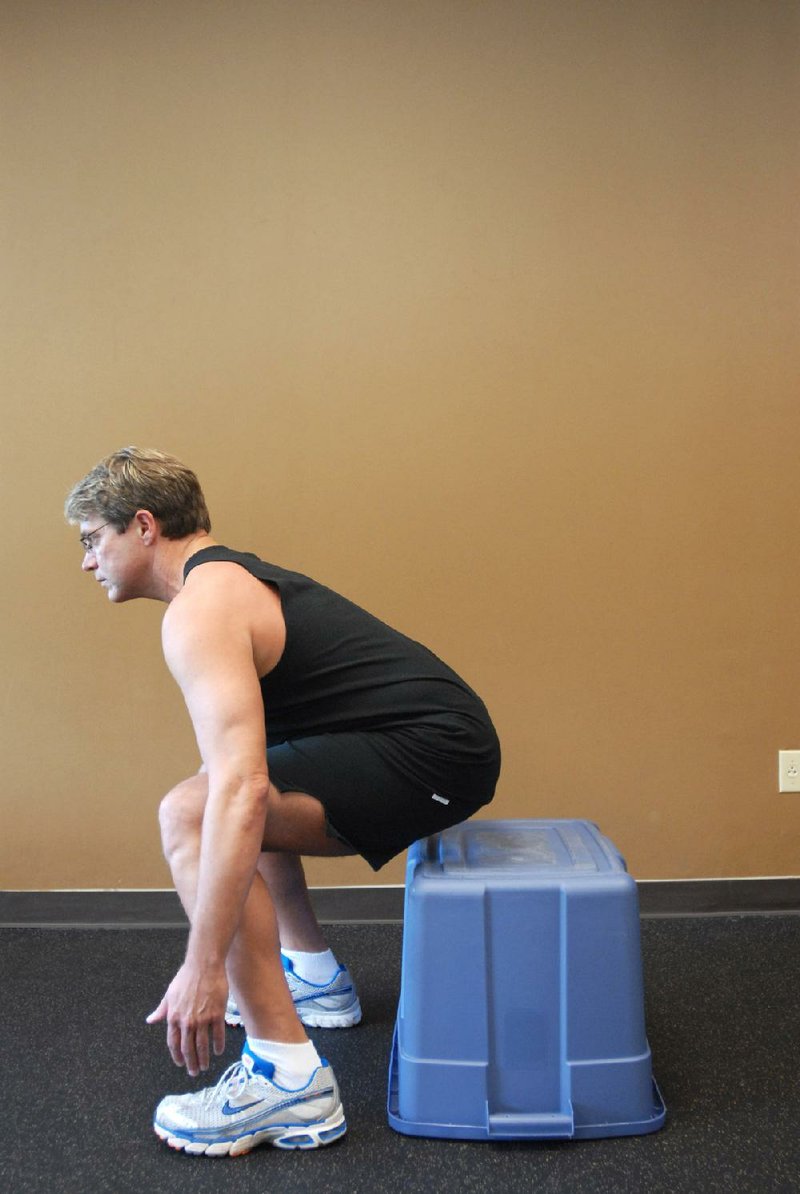LITTLE ROCK — For bodies built to do them, the squat is the King of Exercises.
One movement that targets several muscle groups on the front, sides and back of the body, the squat is also a normal thing to do in your everyday life. Repetition for repetition, no other exercise is as efficient in terms of lower body strengthening and metabolism boosting.
The squat is also a functional exercise. That is, it helps train your body for moving correctly when performing everyday motions and tasks, such as picking up an object from the floor.
But not everybody is built to do squats safely. Orthopedists say that squats require good flexibility at ankles, knees and hips as well as good alignment in the lower body, and if you don’t have those abilities doing squats can cause excessive wear and tear on the hips.
Anyone who already has joint trouble can talk to his doctor before adding squats to his routine. There are variations of the exercise that might be appropriate.
For those of sound body, the traditional body-weight only squat offers many benefits:
Muscles worked: Quadriceps, hamstrings and the gluteus maximus, as well as smaller stabilizing muscles, including those of the lower back.
Execution: Stand up and position the feet so that they are about shoulder width apart. Toes should be pointed straight ahead. Looking straight ahead, move the hips backward and then bend the knees, as you slowly lower into the squat position. Your heels should be in contact with the floor throughout the repetition, and your knees should not travel forward over the toes.
Do not descend any farther than thighs parallel to the floor, and be very careful not to round the back. The spinal column should be kept in its normal alignment to the bottom of the squat and as you return to standing.
When traveling: The squat is a good exercise for those who travel, because it does not require equipment.
OTHER OPTIONS
Many health clubs have machines specifically designed for doing squats.
Wall squats are one option. Place a stability ball behind the lower back or simply put your back against a wall, and then walk your feet forward enough so that when moving the hips toward the floor,your knees do not travel over the toes.
Using added resistance: Get the advice of a professional if you plan to add resistance such as a barbell or dumbbells. The extra weight increases stress on the joints, and some trainers will direct you to hold your breath while executing the exercise. Holding your breath could help to stabilize the lower back, but because it causes an increase in blood pressure, it is not appropriate for everyone.
Safety first: Safety should always be your first priority when exercising. Smart people check with their doctors before adding squats to their workout.
Marjie Gilliam is a personal trainer and fitness consultant in Dayton, Ohio. ActiveStyle editor Celia Storey added some information to this story.
ActiveStyle, Pages 25 on 06/25/2012

